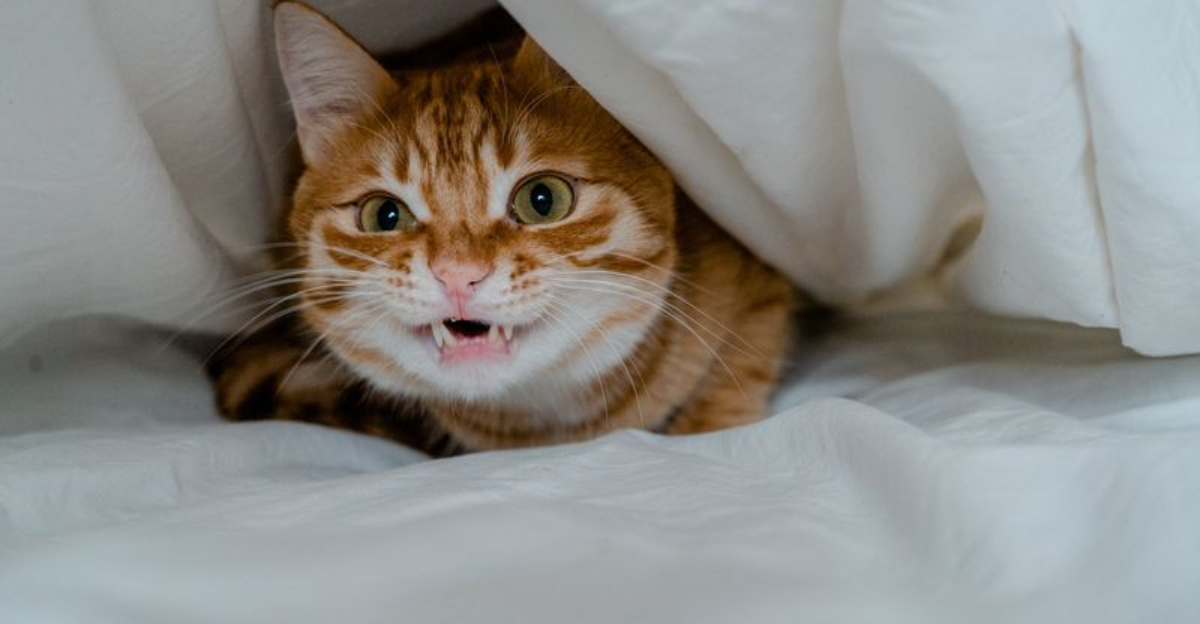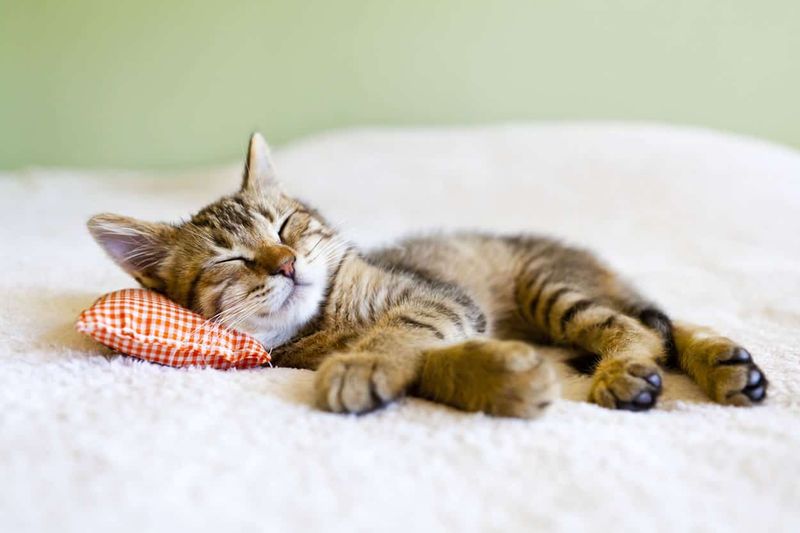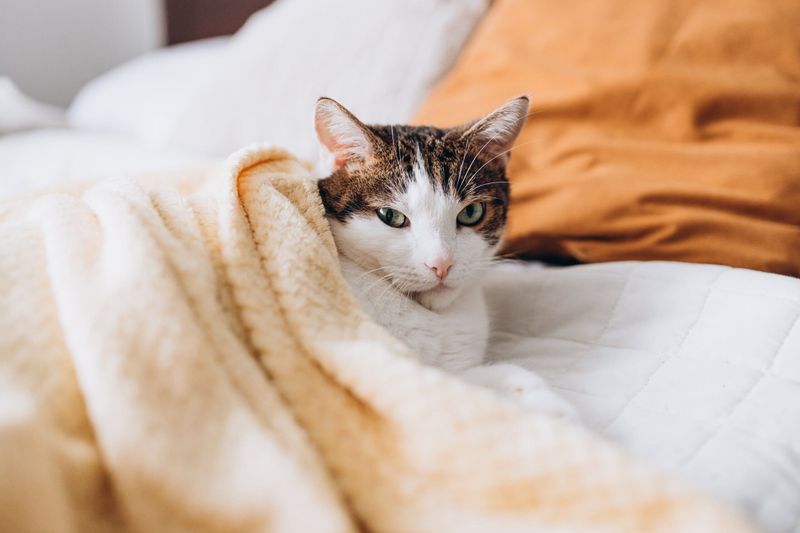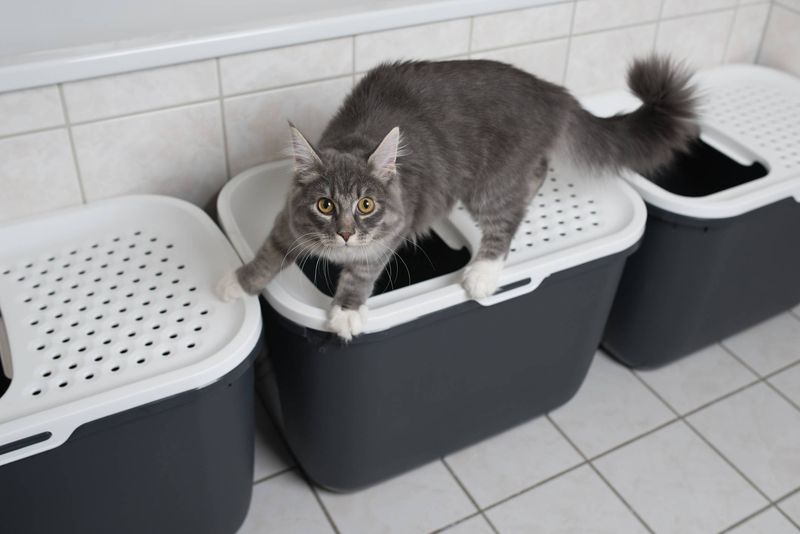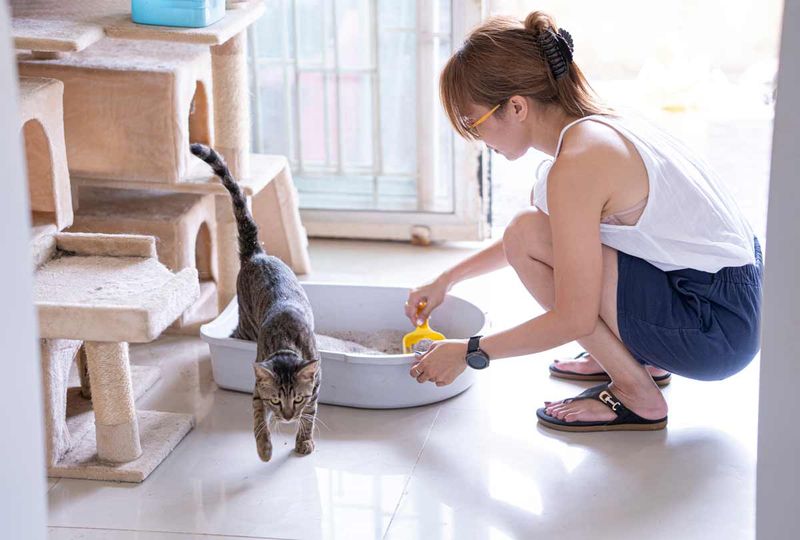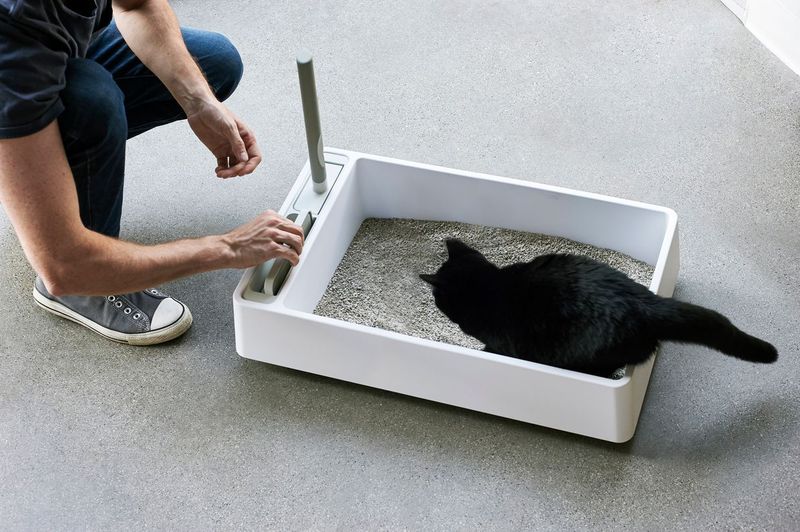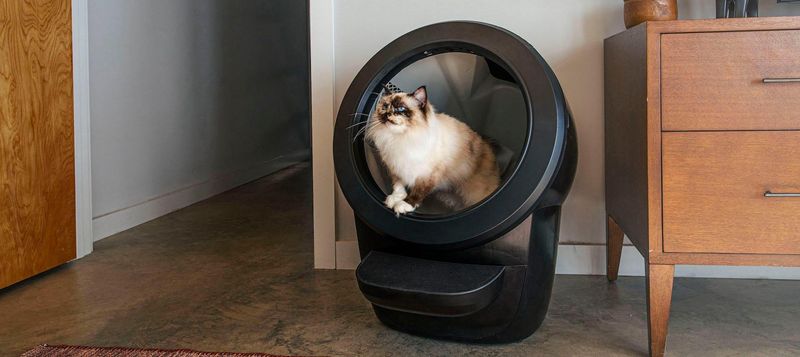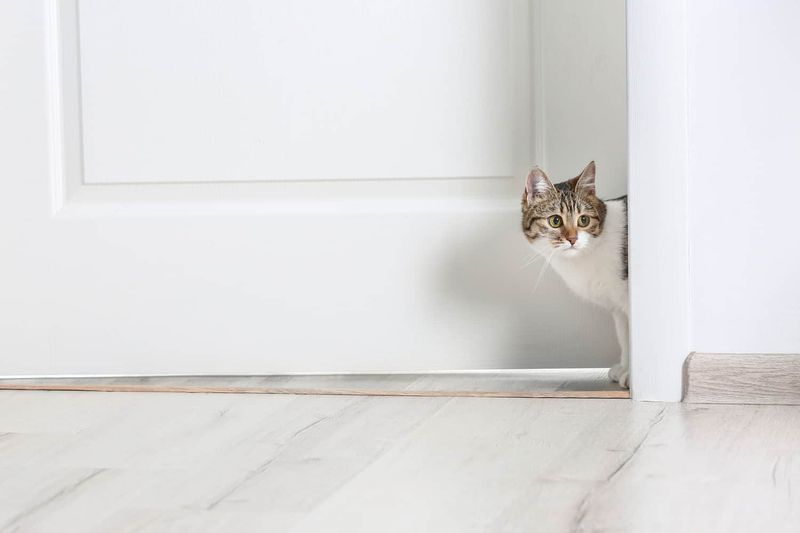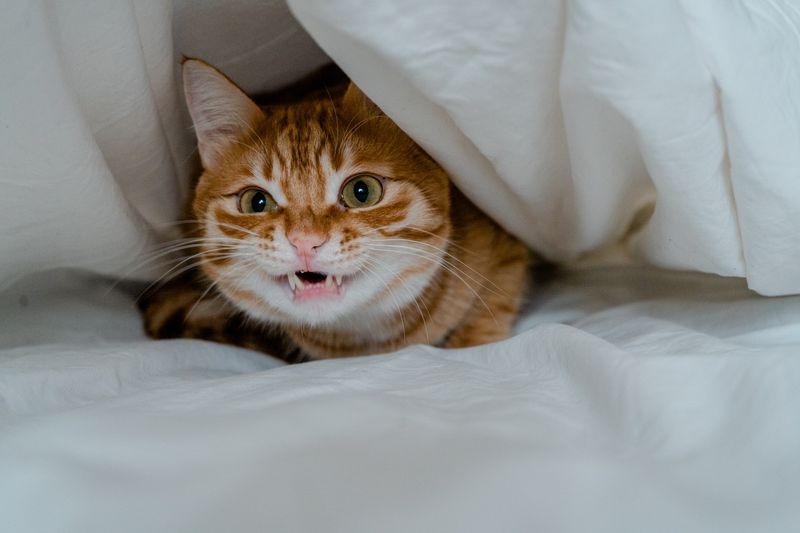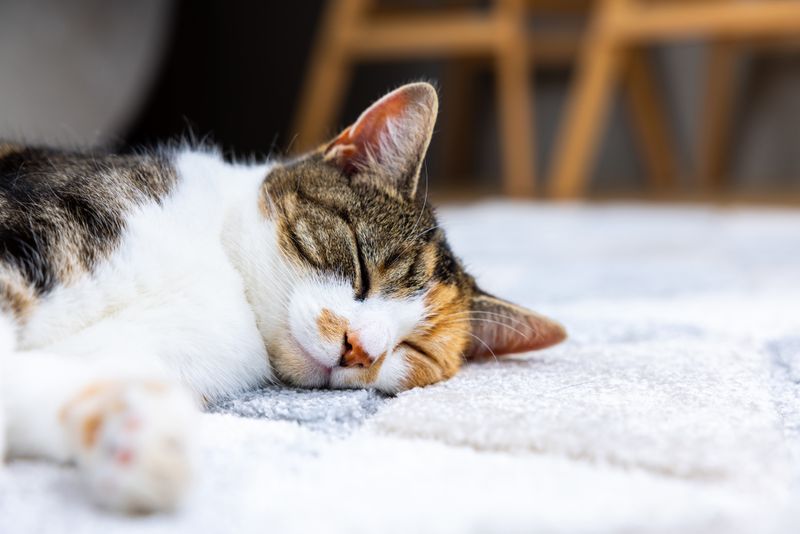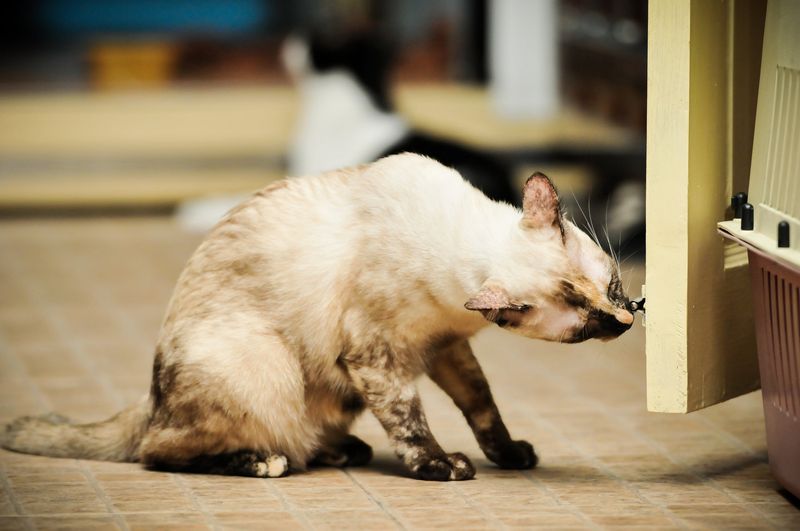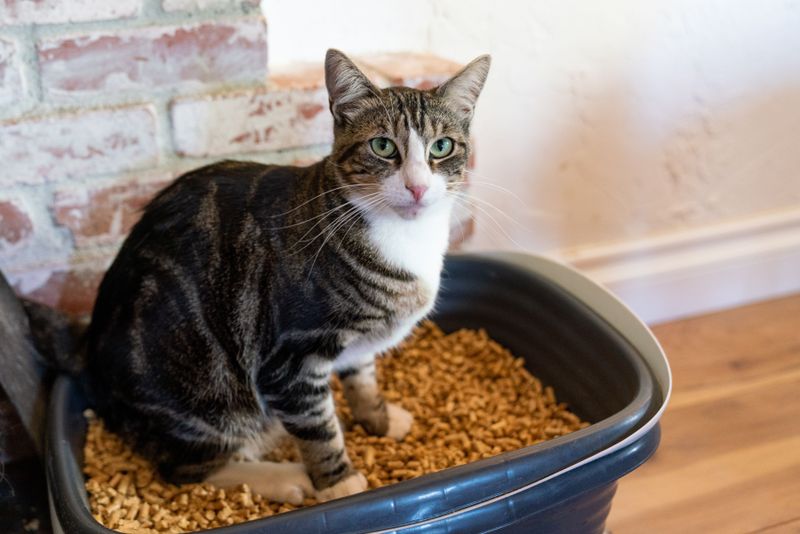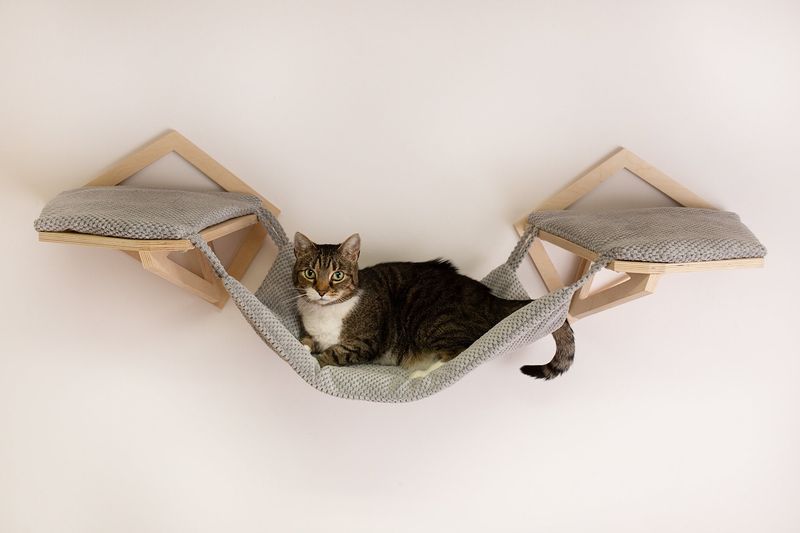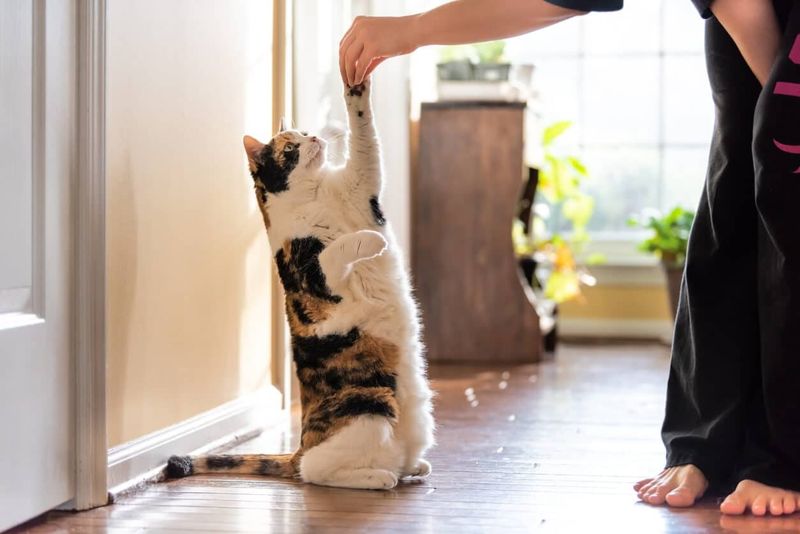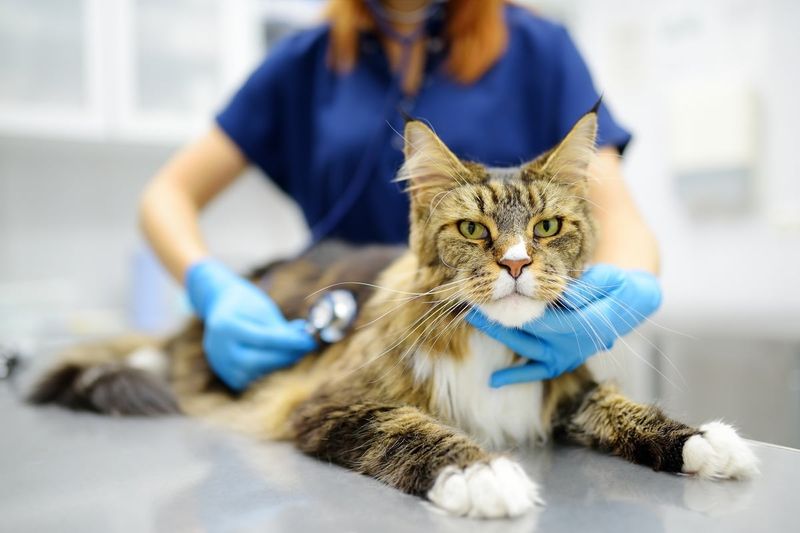📖 Table of Content:
- 1. Rule Out Medical Issues
- 2. Thoroughly Clean the Affected Area
- 3. Provide Multiple Litter Boxes
- 4. Keep the Litter Box Clean
- 5. Try Different Litter Types
- 6. Place the Litter Box in a Quiet, Accessible Spot
- 7. Block Access to the Bed
- 8. Cover the Bed with an Unpleasant Surface
- 9. Address Stress or Anxiety
- 10. Use Synthetic Cat Pheromones
- 11. Give Your Cat More Attention and Playtime
- 12. Try a Different Type of Litter Box
- 13. Provide a Safe, High Resting Spot
- 14. Avoid Punishing Your Cat
- 15. Consult a Veterinarian or Cat Behaviorist
Imagine settling into bed after a long day, only to discover a warm, unwelcome surprise—your cat has peed on your bed. Again. If this sounds all too familiar, you’re not alone! Many cat owners have faced this puzzling (and frustrating) behavior, leaving them wondering why their sweet, purring furball has suddenly turned their cozy bed into a personal litter box. But don’t worry—there’s hope! With a little detective work and the right strategies, you can reclaim your bed and keep your cat happy at the same time.
Cats are mysterious creatures with very specific preferences, and when they start peeing outside the litter box, it’s usually their way of telling you something is off. It could be a medical issue, a protest against a dirty litter box, or even a sign of stress over something as small as a new piece of furniture. Figuring out the root cause is the first step to solving the problem. Luckily, whether your feline friend is marking their territory, feeling anxious, or simply dislikes their litter setup, there are plenty of solutions to get them back on track.
From cleaning up past accidents the right way to making your bed less appealing (and their litter box more inviting), these tips will help you put an end to the problem. So grab your detective hat, channel your inner cat whisperer, and let’s get started on making your bed a pee-free zone again!
1. Rule Out Medical Issues
The first step in addressing your cat’s bed-wetting habit is to rule out any underlying medical issues. Conditions like urinary tract infections, bladder stones, or even diabetes can lead to inappropriate urination. Scheduling an appointment with your veterinarian is crucial. The vet will perform necessary tests to diagnose or eliminate these conditions. If a medical issue is identified, appropriate treatment will be provided. It’s essential to follow through with the treatment plan. Addressing these health problems not only helps with the urination issue but also ensures your cat’s overall well-being.
2. Thoroughly Clean the Affected Area
Cats have a strong sense of smell and are drawn to previously soiled areas. To prevent your cat from returning to the same spot, it’s vital to clean the affected area thoroughly. Use an enzymatic cleaner specifically designed for pet odors. Avoid ammonia-based cleaners, as they can mimic the smell of urine. Cleaning effectively will remove all traces of the odor. This makes the area less attractive to your cat. Consistent and thorough cleaning reduces the likelihood of repeated accidents, helping to break the cycle of inappropriate urination.
3. Provide Multiple Litter Boxes
Having multiple litter boxes can significantly reduce your cat’s bed-wetting habit, especially in multi-cat households. The general rule is to have one litter box per cat, plus one additional box. This ensures that each cat has access to a clean box whenever needed. Some cats prefer separate boxes for urination and defecation. Strategically place the boxes in different, accessible locations to encourage use. By providing more options, you reduce stress and territorial disputes. This approach fosters a more harmonious environment, encouraging your cat to use the litter box consistently.
4. Keep the Litter Box Clean
A clean litter box is essential for preventing inappropriate urination. Cats are fastidious creatures and may avoid a dirty box, opting for your bed instead. Scoop the litter daily and completely change it at least once a week. Regular cleaning keeps the box inviting for your cat. Place the litter box in a quiet, accessible location to further encourage use. By maintaining cleanliness, you reduce the chances of accidents. A well-maintained litter box reassures your cat and promotes good litter habits, reducing the likelihood of bed-wetting incidents.
5. Try Different Litter Types
Cats can be quite particular when it comes to litter preferences. Experimenting with different types of cat litter can help address your cat’s bed-wetting habit. Consider trying various textures, such as clumping, non-clumping, or silica gel. Some cats may prefer unscented litter, while others might be drawn to a subtle fragrance. Observe your cat’s reactions and note any preferences. By adapting to your cat’s liking, you make the litter box more appealing. This increases the likelihood of consistent use, reducing the chances of inappropriate urination on your bed.
6. Place the Litter Box in a Quiet, Accessible Spot
The location of the litter box plays a significant role in your cat’s willingness to use it. Cats prefer quiet, low-traffic areas where they can do their business undisturbed. Avoid placing the litter box near noisy appliances or in busy areas. Ensure your cat can easily access the box, even at night. This setup makes the litter box a more inviting option compared to your bed. By providing a peaceful spot, you encourage proper litter habits. This reduces anxiety and the likelihood of bed-wetting incidents, creating a stress-free environment for your feline friend.
7. Block Access to the Bed
If your cat frequently targets your bed for urination, blocking access can be an effective deterrent. Keep the bedroom door closed when you’re not around to supervise. This prevents your cat from reaching the area and reduces the temptation to urinate there. If closing the door isn’t feasible, consider using a baby gate or other barrier. Consistently blocking access helps break the habit of bed-wetting. This, combined with other preventive measures, encourages your cat to seek appropriate alternatives like the litter box.
8. Cover the Bed with an Unpleasant Surface
Cats are sensitive to textures and often avoid surfaces they find unpleasant. Covering your bed with materials like aluminum foil, a plastic shower curtain, or a waterproof mattress protector can deter your cat from urinating there. These surfaces create an uncomfortable environment that discourages lingering. While this tactic is temporary, it can be effective in breaking the cycle of bed-wetting. Once your cat’s litter habits have improved, you can gradually remove these coverings. The goal is to make the bed less appealing, encouraging your cat to use the litter box instead.
9. Address Stress or Anxiety
Stress and anxiety can contribute to inappropriate urination in cats. Changes in routine, new pets, or loud noises may trigger stress-related bed-wetting. Identify and minimize sources of stress in your cat’s environment. Provide a consistent routine and a safe space for your cat to retreat to. Ensuring a calm atmosphere helps alleviate anxiety. Consider using calming aids like pheromone diffusers to create a peaceful environment. Addressing stress not only curbs bed-wetting but also enhances your cat’s overall quality of life, promoting a happier, more content feline companion.
10. Use Synthetic Cat Pheromones
Cat pheromones can be a useful tool in managing your cat’s bed-wetting habit. Products like Feliway diffusers or sprays mimic natural pheromones that calm and reassure cats. These products can help reduce stress-related urination by creating a soothing environment. Place the diffuser in a room where your cat spends most of its time. Consistent use of pheromones can lead to noticeable improvements in behavior. This method, combined with other strategies, supports a calm and secure atmosphere. A relaxed cat is less likely to exhibit inappropriate urination behaviors, improving harmony in the home.
11. Give Your Cat More Attention and Playtime
Boredom or lack of attention can lead to undesirable behaviors like bed-wetting. Engaging your cat with more playtime and attention can help curb this habit. Schedule regular play sessions using toys that stimulate your cat’s natural hunting instincts. Enrichment activities like puzzle feeders or interactive toys can also keep your cat entertained. This added stimulation reduces stress and satisfies your cat’s need for mental engagement. By providing more interaction, you create a stronger bond and reduce the likelihood of anxiety-driven urination. A happy, engaged cat is more likely to use the litter box consistently.
12. Try a Different Type of Litter Box
The design of the litter box can impact your cat’s willingness to use it. Some cats may dislike covered boxes, while others prefer larger or lower-entry designs. Experiment with different styles to find what suits your cat. Consider open boxes, high-sided options, or ones with entry ramps. Observing your cat’s preferences helps tailor the environment to their needs. A comfortable, accessible litter box increases the likelihood of consistent use. This reduces the chance of your cat seeking alternative spots, like your bed, for urination. The right box design promotes proper litter habits and a happier cat.
13. Provide a Safe, High Resting Spot
Providing elevated spaces like cat trees or shelves can help prevent bed-wetting caused by insecurity. These high perches give your cat a comfortable vantage point to relax while satisfying their instinctual need for safety. A secure resting area minimizes stress and anxiety, which in turn decreases the likelihood of inappropriate urination. By catering to your cat’s natural instincts, you create a more comfortable and harmonious environment, encouraging better litter box habits and reducing accidents. Additionally, placing cozy bedding or blankets on these elevated spots can make them even more appealing to your cat. Over time, your cat will associate these safe spaces with comfort, making them less likely to seek out your bed for security.
14. Avoid Punishing Your Cat
Punishing your cat for bed-wetting can exacerbate the problem. Cats do not associate punishment with the behavior, leading to increased stress and anxiety. Instead, focus on positive reinforcement. Praise and reward your cat when they use the litter box correctly, using treats or affection. This encourages desirable behavior and strengthens your bond. A calm, understanding approach fosters trust and reduces fear-based urination. By avoiding punishment, you create a supportive environment. This method helps prevent future incidents, ensuring a happy, well-adjusted cat that uses the litter box appropriately.
15. Consult a Veterinarian or Cat Behaviorist
If your cat’s bed-wetting persists despite your efforts, consulting a veterinarian or cat behaviorist is advisable. These professionals can help identify underlying behavioral or medical issues. A thorough assessment provides insights and tailored solutions. Behavioral therapy or medical treatment may be recommended based on the assessment. A professional’s guidance can significantly improve the situation, addressing specific challenges. By seeking expert help, you demonstrate commitment to your cat’s welfare. This approach increases the likelihood of resolving the issue, ensuring a harmonious cohabitation with your feline friend.
